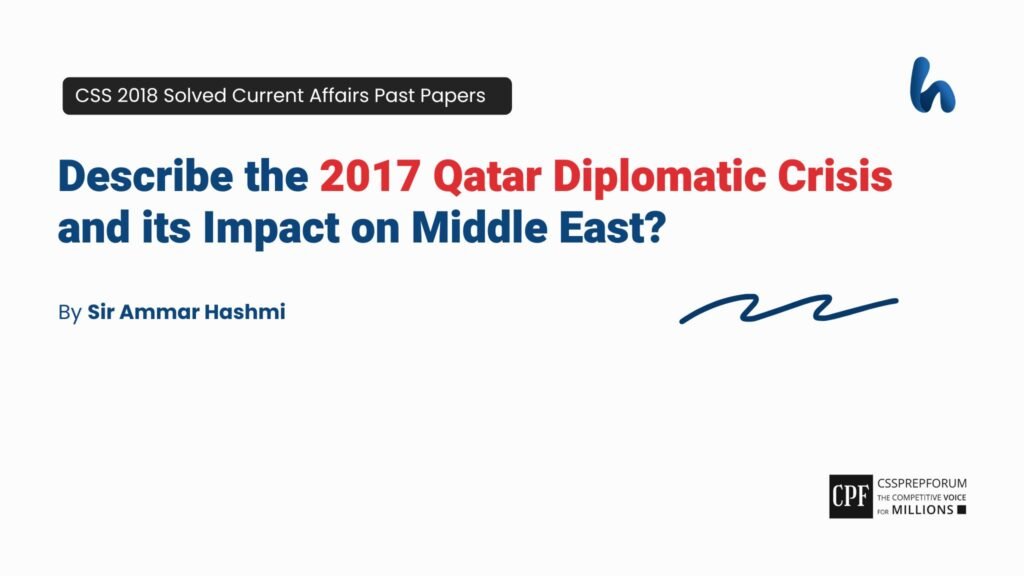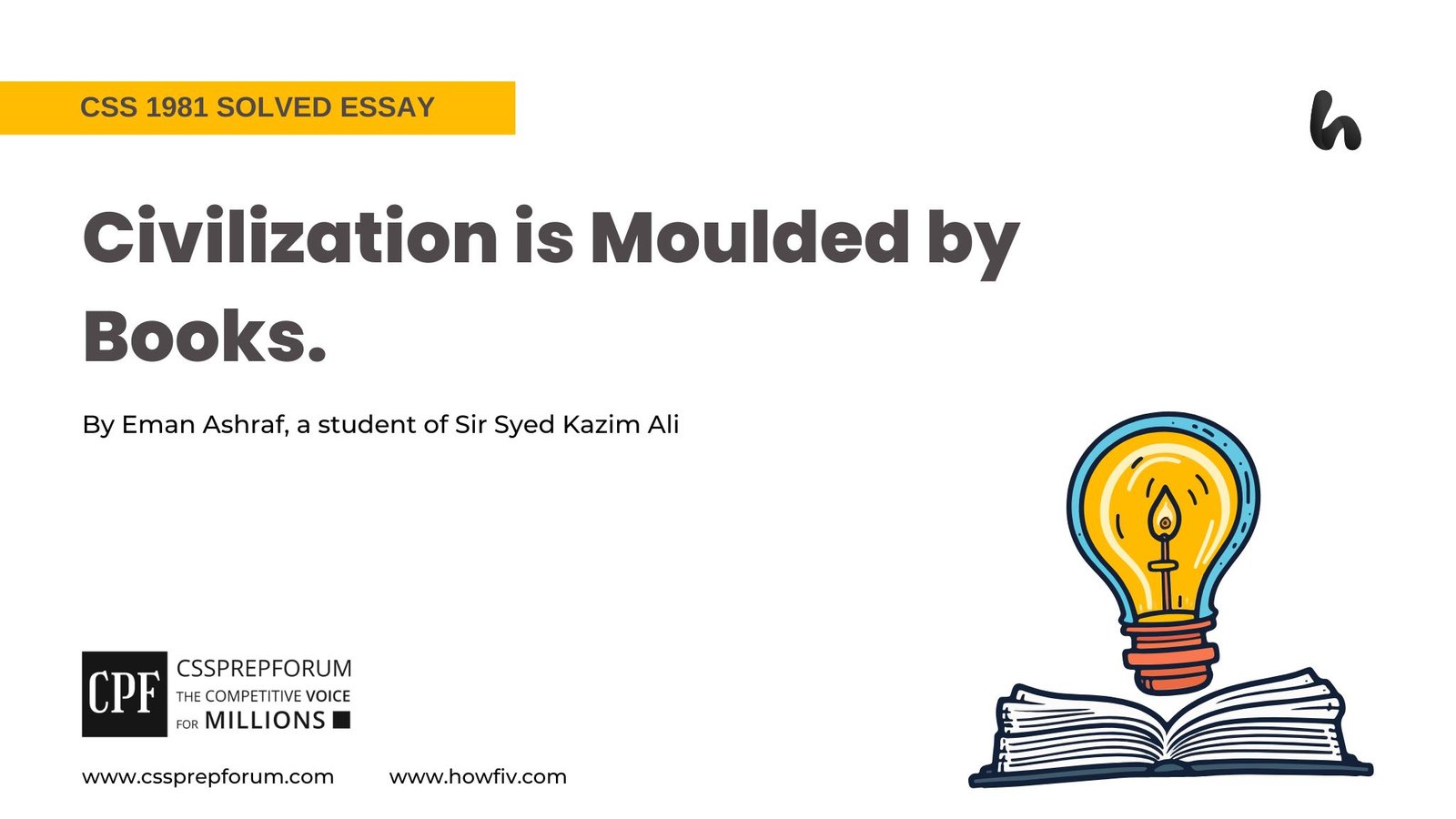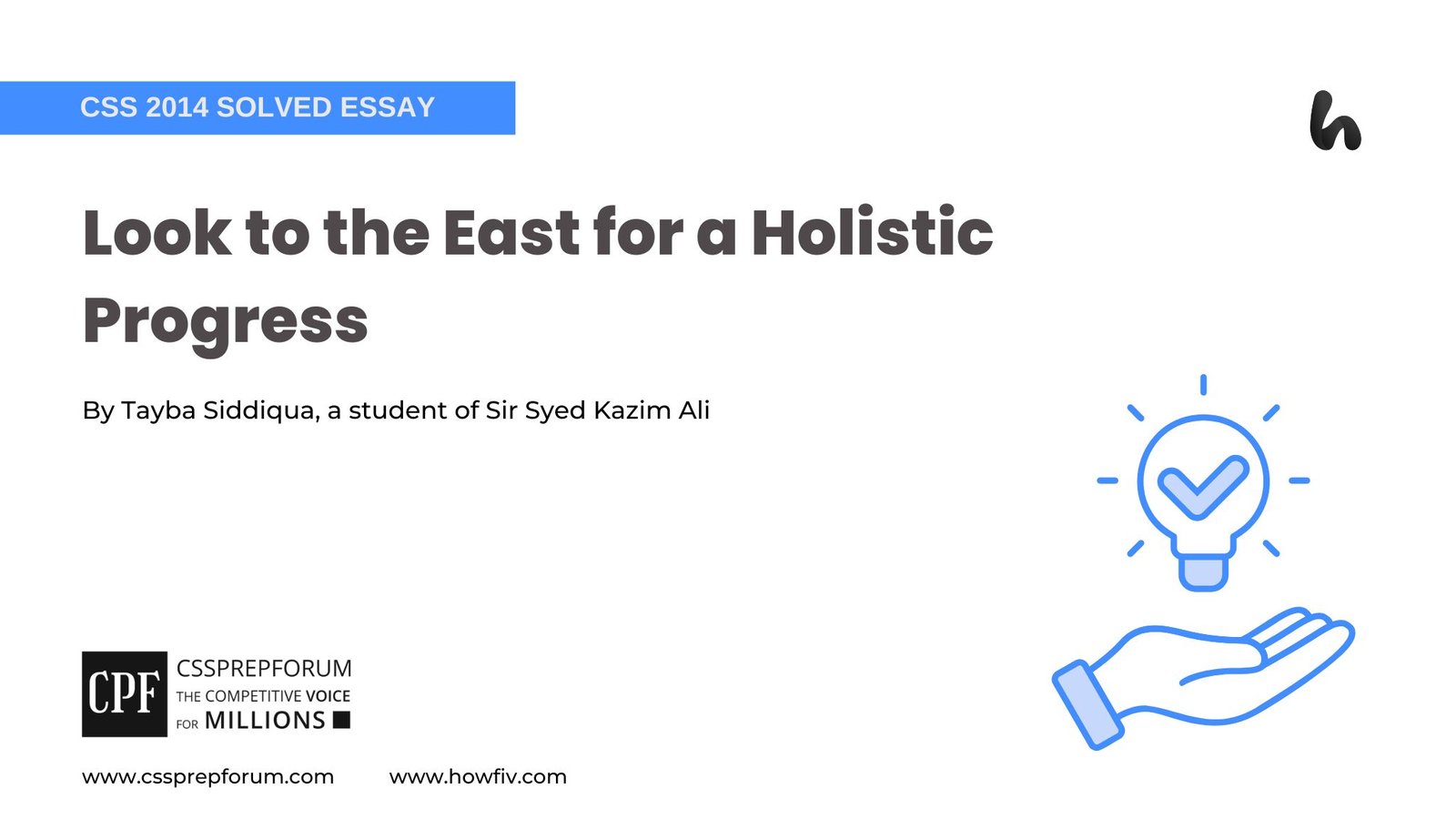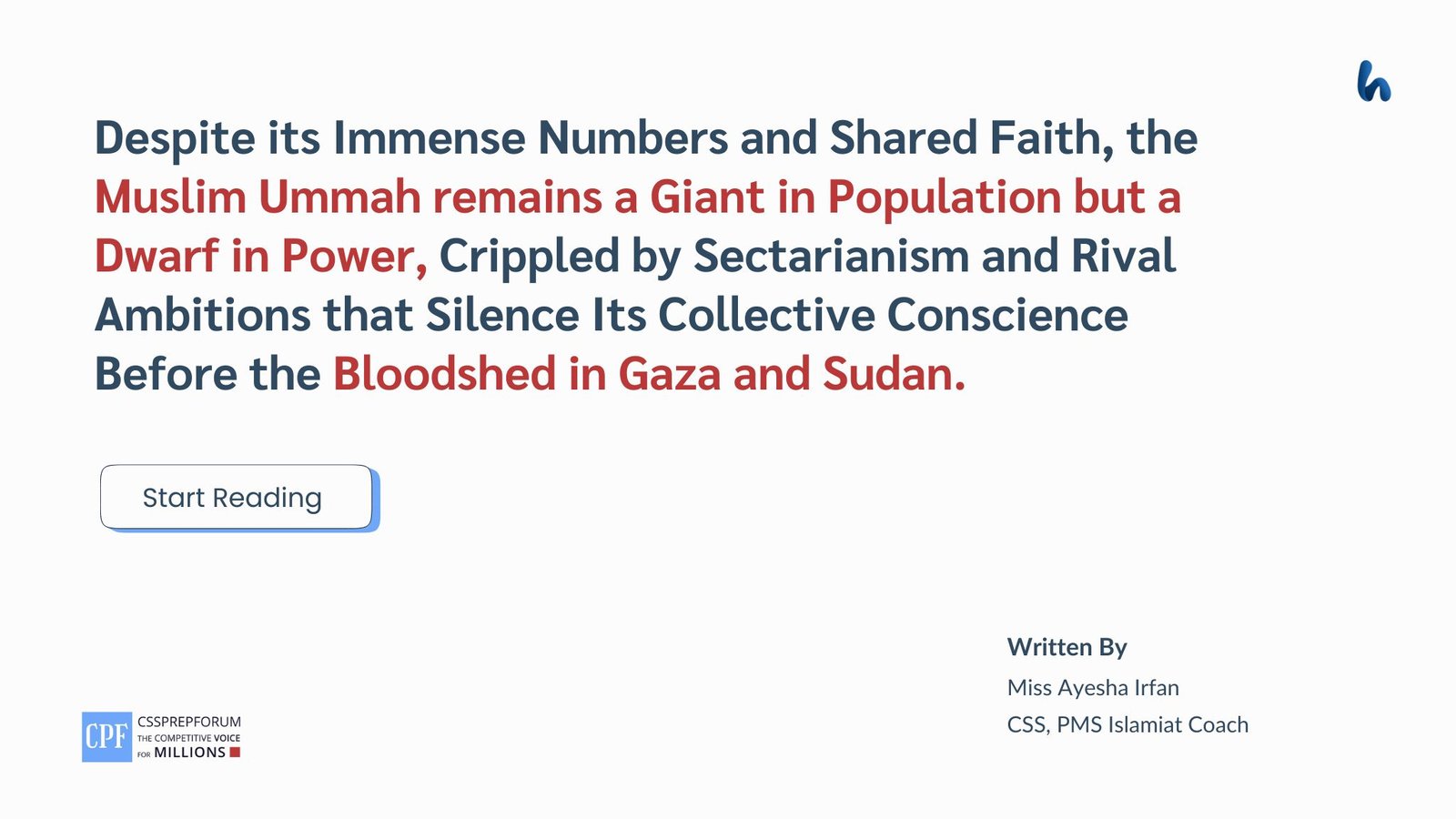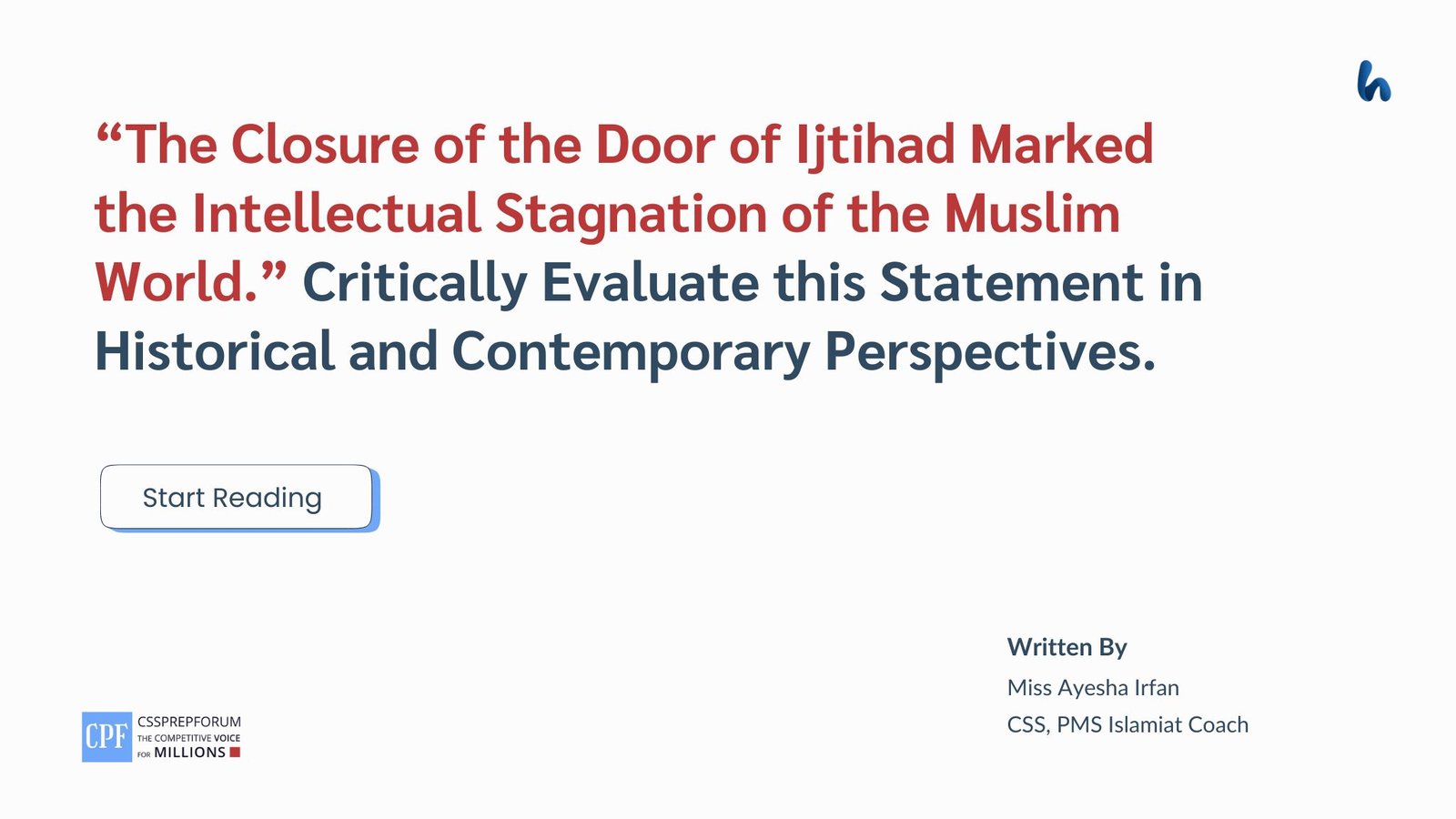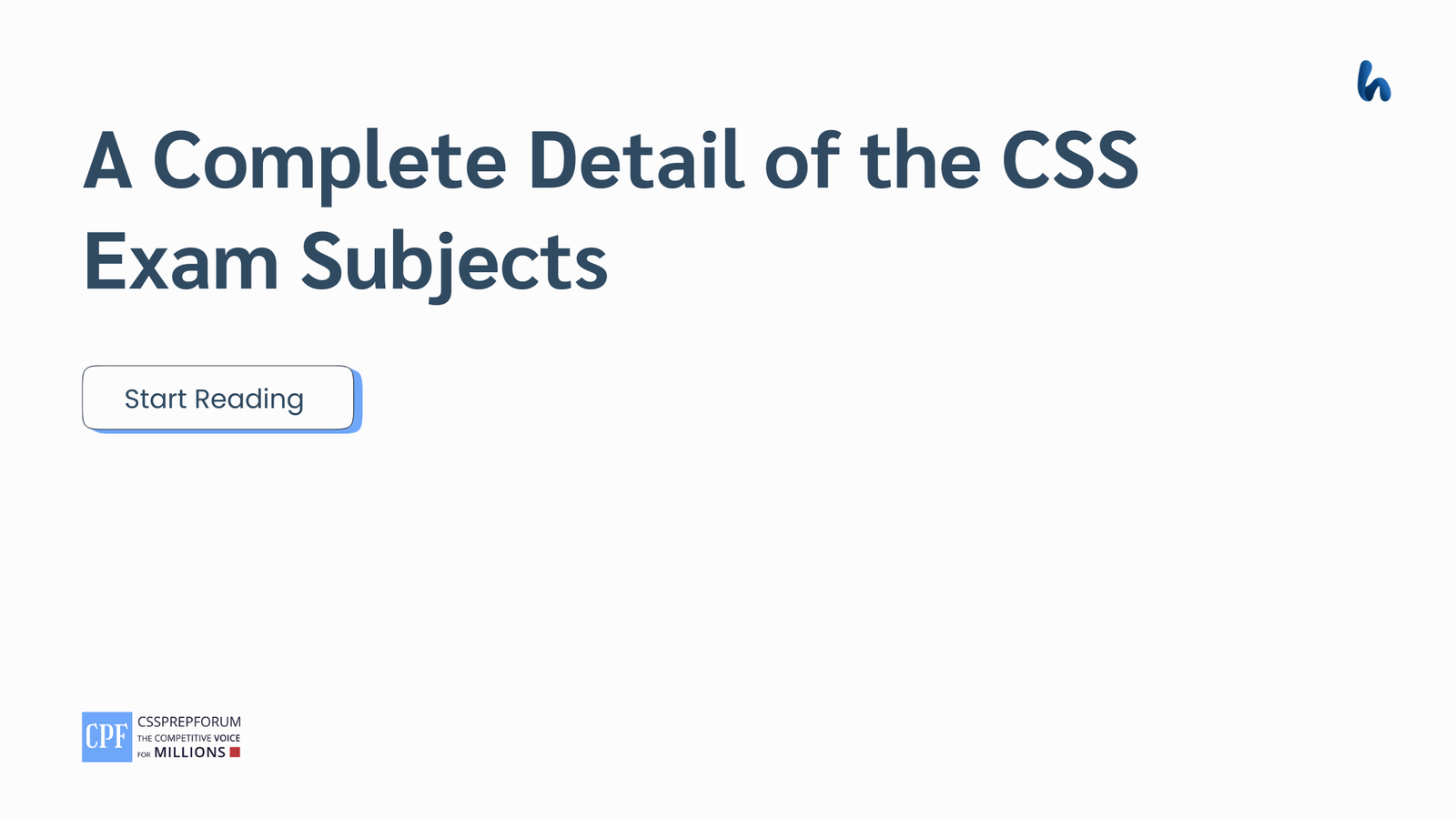CSS 2018 Solved Current Affairs Past Papers | 2017 Qatar Crisis and Middle East
The following question of CSS Current Affairs 2018 is solved by Sir Ammar Hashmi, the best Current Affairs Coach, on the guided pattern of Sir Syed Kazim Ali, which he taught to his students, scoring the highest marks in compulsory subjects for years. This solved past paper question is uploaded to help aspirants understand how to crack a topic or question, how to write relevantly, what coherence is, and how to include and connect ideas, opinions, and suggestions to score the maximum.

Question Breakdown
This question requires the brief description of Qatar crises 2017. it also demands the impact of these tensions on neighbouring countries and their regional coalitions, also its effects on whole of the middle east.
Outline
1-Introduction
2-The Qatar Diplomatic Crisis 2017
3-Impact on the Middle East
- ✓ Economic Impact
- ✓ Diplomatic & Political Fallout
- ✓ Regional Security and Stability
- ✓ Social and Humanitarian Impact
- ✓ Information and media Warfare
- ✓ Role of external powers
- ✓ Long-term Implications for GCC Cooperation
4-Critical Analysis
5-Conclusion

Answer to the Question
Introduction
The Qatar diplomatic crisis was an unpredictable and unprecedented event in the history of the Middle East, which included sea, air, and land blockades that cut off Qatar from its neighboring countries. It was one of the most chronic diplomatic fallouts in the Gulf Cooperation Council (GCC) history, which reshaped regional alliances and highlighted other deep-rooted tensions. Qatar displayed remarkable resilience in response to 13 demands presented by the Saudi bloc to end this embargo. Moreover, Qatar quickly established new trade routes through Iran and Turkey and fostered self-reliance in multiple sectors, especially food production. This greatly impacted the Middle East in terms of economy, politics, regional stability, social and media, and information sectors. These tensions officially concluded after 4 years with the signing of the Al-Ula Declaration in January 2021 at the GCC Summit in Saudi Arabia, which restored full diplomatic relations of Qatar with other GCC countries.
The Qatar Diplomatic Crisis 2017
The Qatar Diplomatic Crisis was a significant geopolitical conflict in the Gulf region. It began on 5th June 2017 when the Kingdom of Saudi Arabia, Bahrain, Egypt, and the United Arab Emirates (UAE) abruptly severed diplomatic ties with Qatar. This unpredictable and unprecedented move included a sea, air, and land blockade that cut off Qatar from its neighboring countries. It was one of the most chronic diplomatic fallouts in the Gulf Cooperation Council (GCC) history, which reshaped regional alliances and highlighted other deep-rooted tensions. There are no immediate causes of this diplomatic strain but lingering tensions that date back to long-standing issues like Qatar’s independent foreign policy, political ideologies, and Middle East power struggles, which often coincided with its Gulf neighbors. Qatar always supported Muslim brotherhood around the globe, which UAE and KSA view as a threat. Not only this but its diplomatic relations with Iran (amid gas field shared between both) fueled mistrust as Iran is taken as a regional rival of KSA. Additionally, Al Jazeera stated that Qatar’s state-funded news network, its increasing influence, and critical coverage of monarchies of the Middle East favored escalating these tensions. The actual trigger in the severity of these relations was the hacking of Qatar News Agency’s website in May 2017, which showed fake quotes attributed to Qatar’s Amir (the ruler) in which he praised Iran and criticized Gulf policies. Despite denial from Qatar, KSA and its allies responded in the form of diplomatic rupture and blockade. Fig 1.1 shows the Qatar Blockade 2017 and Middle East alliances and politics.

Source: DAWN.COM
Without any delay Qatar was diplomatically isolated, closing all the borders, Qatari citizen expulsion from neighboring countries, and trade routes blockade. Qatar, due to airspace restrictions, was forced to take costlier routes, creating social and economic disruption, which included shortages of food and medical supplies that are mostly import-dependent on Saudi Arabia. The Anti-Qatar alliance issued thirteen key demands to normalize and lift the blockade. These demands are shown in Fig 1.2, which include scaling back ties with Iran, shutting down Al Jazeera, closing a Turkish military base in Qatar, and countering alleged links to terrorist organizations.

Source: Al-Jazeera
Qatar displayed remarkable resilience in response to these demands by quickly establishing new trade routes through Iran and Turkey and fostering self-reliance in multiple sectors, especially food production. Qatar saw these demands as an assault on its sovereignty. Kuwait and the United States tried meditation but ended with limited success. These tensions officially concluded after 4 years with the signing of the Al-Ula Declaration in January 2021 at the GCC Summit in Saudi Arabia, which restored full diplomatic relations.
Impact Qatar Crisis on the Middle East
- ✓ Economic Impact:
The immediate effect of the blockade was an economic shock to Qatar’s economy due to the sudden severing of transport and trade links. Qatar normally imports 40% of its food from Saudi Arabia, so the first problem became the food which, with trade and other blockades, eventually affected GDP growth, which slowed from 2.1% in 2016 to 1.6% in 2017. In the world of globalization, Qatar’s economy profoundly impacted the Middle East, disrupting investment and trade and creating economic instability across the region. It not only affected Qatar alone but also had ripple effects on the anti-Qatar alliance and Gulf Cooperation Council (GCC) economies, which were already suffering low oil prices and economic challenges. For example, Emirati companies lost around seven billion dollars annually due to trade. The Dubai Chamber of Commerce estimated the loss of 1.5 billion dollars in trade revenue to the UAE. Similarly, Saudi companies faced losses, as its major export partner was Qatar in food, etc. As a whole, these crises affected the GCC unity and investors’ confidence in the region, causing international business concerns about the risk of investing in Gulf economies. The crisis also impacted foreign direct investment (FDI) in the region; for example, FDI inflows into GCC countries dropped by 9% from $26 billion dollars in 2016 to $23 billion dollars in 2017.
- ✓ Diplomatic & Political Fallout:
It was marked by a significantly visible breakdown in regional unity, especially within the GCC. The GCC was formed in 1981 as an economic and political alliance of six Gulf states. These crises severely fractured it. The diplomatic rift resurfaced the deep-seated policy and ideological differences among the Gulf countries, particularly between Qatar and the Saudi-led bloc. The GCC always managed to present a united front on regional issues but, in these crises, struggled to mediate, which undermines its credibility and effectiveness. It also exposed Qatar’s independent stance, particularly its support for radical Islamist groups, highlighting the Muslim Brotherhood and its close diplomatic relations with Iran, which directly clashed with other foreign policies. The Saudi attempt to blockade was an attempt to pressure Qatar to align more closely with their foreign policies but instead reinforced the latter’s determination to pursue an autonomous path. The situation polarized international and regional actors like Turkey, who emerged as an ally to Qatar in military and economic support, as well as Iran, who stepped up in Qatar’s support and provided airspace, alternative trade routes, and food supplies, which further complicated Saudi Iranian rivalry. Contrary to this, The United States initially showed support for the blockade but later shifted towards a more neutral stance, as Qatar’s Al Udeid Air Base played a crucial role in U.S. military operations in the Middle East (hosted over 10,000 U.S. military personnel – U.S. Department of Defense).
- ✓ Regional Security and Stability:
The crisis has deepened existing regional animosities and introduced new dynamics that affected regional stability and security arrangements. First of all, the diplomatic rift and blockade exacerbated tensions between neighboring countries; this antagonism led to a high risk of military confrontations in the already volatile region as hostile rhetoric and mutual accusations were seen among the Gulf states. Secondly, it prompted military realignments and increased spending on defense. Qatar, being on high threat as isolated, accelerated its defense acquisitions (up to 50%) and military cooperation with Turkey and the United States (signed a $12 billion deal with the U.S. for F-15 fighter jets and a $7 billion deal with France for Rafael jets (source; Reuters). Additionally, it severely disrupted GCC’s joint security initiatives and defense strategies; for instance, joint military exercises were either canceled or delayed, which weakened GCC’s ability to present itself as a sole cohesive security front.
- ✓ Social and Humanitarian Impact:
It also had notable social and humanitarian impacts on the Middle East, affecting various aspects of regional stability as well as daily life. The humanitarian challenges that appeared may include shortages of essential goods as imports and exports were disrupted. Gulf countries rely heavily on neighbors for food supplies and other basic necessities, and the embargo blocked the supply of goods, leading to shortages in markets and inflated prices for basic commodities. For instance, the Qatar Ministry of Economy reported that food prices in Qatar spiked by up to 30% during the early months and vice versa in neighboring countries, as they have interdependent economies. It also affected the expatriate community, like workers, from Qatar and neighboring countries. International Organization for Migration says that 200,000 faced travel restrictions and job insecurity which caused anxiety and extreme living conditions. Moreover, as social and cultural exchange was hindered, the educational and cultural programs of students and artists faced challenges in participation in events and academic exchanges. Additionally, it disrupted humanitarian aid and development projects in the Middle East. UN Office for the Coordination of Humanitarian Affairs reported that Qatar’s humanitarian aid to conflict zones faced delays of up to six months of disruption due to logistical challenges.
- ✓ Information and media Warfare:
The crises flamed the proliferation of propaganda, i.e., extensive media campaigns to discredit each; the Saudi bloc used media outlets to accuse Qatar of facilitating terrorism, risking regional stability. Contrary to this, Qatar utilized Al Jazeera, to counter these claims. In addition to this, social media also played a crucial role in amplifying warfare information. Both used Twitter, Instagram, and Facebook to spread their narratives and get support. The trending hashtags used to push propaganda during the time of crisis to rally public opinion were #BoycottQatar, #QatarTerrorism, and #QatarUnderSiege, and vice versa (reported by the Washington Post). This media warfare had a tangible impact on international reactions, for instance, Western policymakers and media (The Washington Post and The New York Times), who initially aligned with the Saudi bloc and published articles that highlighted Qatar’s perspective. These articles and media reports play a crucial role in the minds of investors and businesses that are interested in the Middle East.
- ✓ Role of External Powers:
These crises significantly influenced the role of external powers which has altered regional alliances and shifted geopolitical dynamics. For instance, the US found itself in a complex diplomatic landscape, which was to balance its military and economic ties with both the Saudi-led bloc and Qatar because the latter was hosting a key U.S. military base and supporting military sales and diplomatic hands. In contradiction, KSA and UAE got closer to Western allies, including France and the UK, to solidify their position with arms deals and military cooperation. Moreover, increased engagement from Turkey was observed, which deployed 5000 troops, established a military base, and expanded its military presence in Qatar with the aim to counterbalance Saudi and UAE influence. Additionally, Iran appeared as a crucial ally to Qatar that provided essential supplies and support to Qatar increasing its influence in the Gulf. The shift in alliances and foreign interventions highlighted the multifaceted roles played by these external powers amid the crises in the Middle East, which demonstrated how regional conflicts can reshape global strategic and diplomatic relations.
- ✓ Long-term Implications for GCC Cooperation:
This conflict exposed deep-seated rifts among GCC members, where the bloc’s inability to act as a unified force in regional as well as international affairs. It led to a suspension of GCC meetings and cooperation efforts (reported by the GCC Secretariat). This made Qatar pursue closer ties with Turkey and Iran, the non-GCC partners that diminished the bloc’s collective influence. It also highlighted the vulnerability of GCC to internal disputes, as evidenced by the fragmentation and delay of its summit in 2018 because of the lack of consensus and coordination among members. It was also reported by the International Monetary Fund that GCC members faced a decline in trade by approximately 20%. The crisis has led to increased efforts to strengthen bilateral relations and new alliances among member states but GCC will need to address the divisions and cracks effectively and rebuild trust among its states to restore its effectiveness for regional stability.
Critical Analysis
Qatar’s Diplomatic Crisis was less about the allegations of terrorism and more about power politics and control over the Middle East. The blockade seemed like economic and political pressure from Saudi Arabia and the UAE to suppress Qatar’s independent foreign policy. This approach exposed the deep hypocrisy within the region, as most of the Saudi allies involved in the blockade were themselves harboring extremists to their advantage. The crisis was a reminder of how these nations are often driven more by personal rivalries and competing visions rather than genuinely toward regional stability. Unfortunately, the crisis turned out to be a dramatic miscalculation that empowered Qatar and exposed the weaknesses in the Saudi-led alliance.
Conclusion
The Qatar Diplomatic Crisis served as a case study of how regional disputes can have long-lasting and wide-ranging effects on social cohesion, political stability, and economic interdependence within a state and on regional and international sectors like in the Middle East. This analysis underscores the need for time and effective conflict resolution and its mechanisms, which are of great importance to foster cooperative relationships among states to ensure regional stability and prosperity. The failure of GCC amid these crises has unveiled the true intentions of states, that they, rather than cooperate, have individual goals and targets.
CSS Solved Past Papers’ Essays
Looking for the last ten years of CSS and PMS Solved Essays and want to know how Sir Kazim’s students write and score the highest marks in the essays’ papers? Then, click on the CSS Solved Essays to start reading them.
CSS Solved Essays
CSS Solved General Science & Ability Past Papers
Want to read the last ten years’ General Science & Ability Solved Past Papers to learn how to attempt them and to score high? Let’s click on the link below to read them all freely. All past papers have been solved by Pakistan’s top CSS GSA coach having the highest score of their students.
General Science & Ability Solved Past Papers

